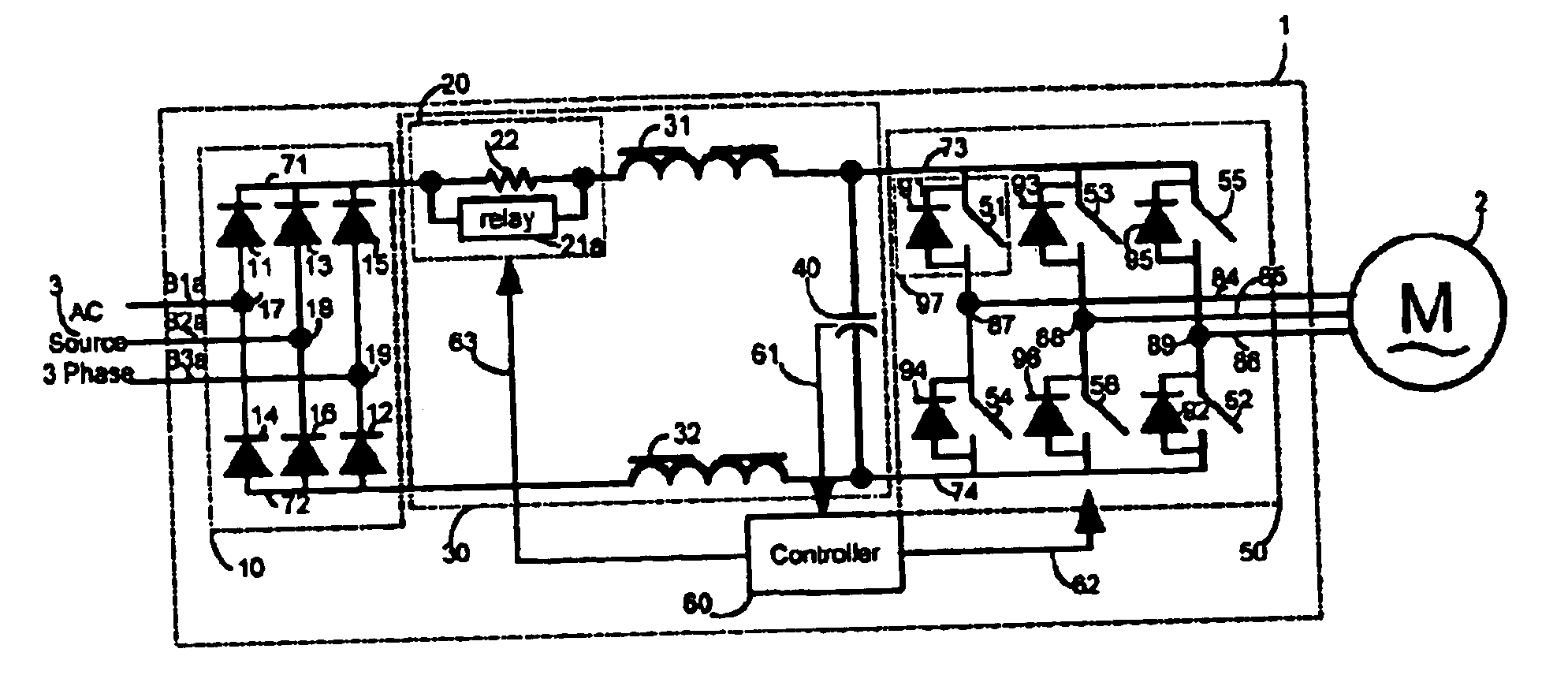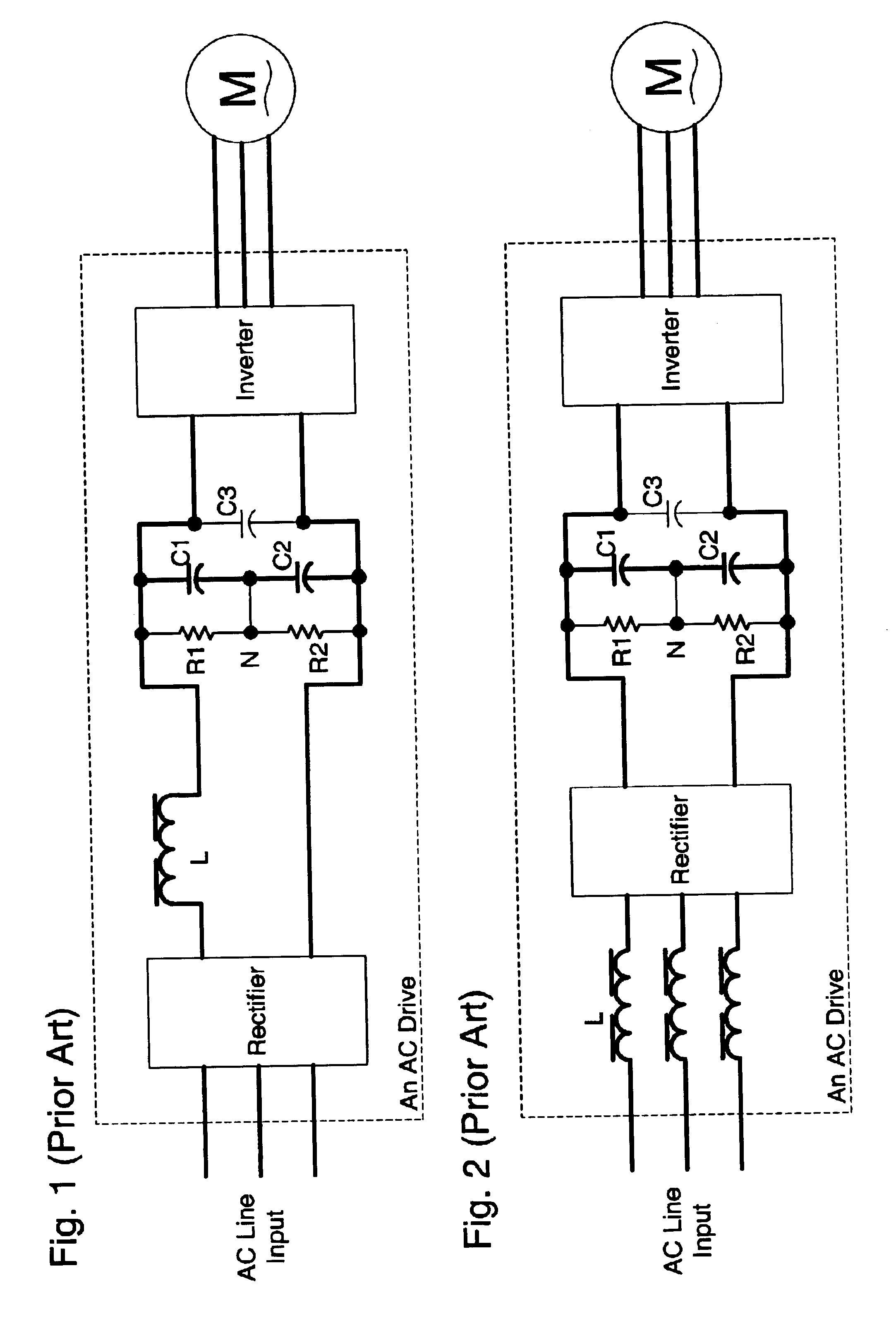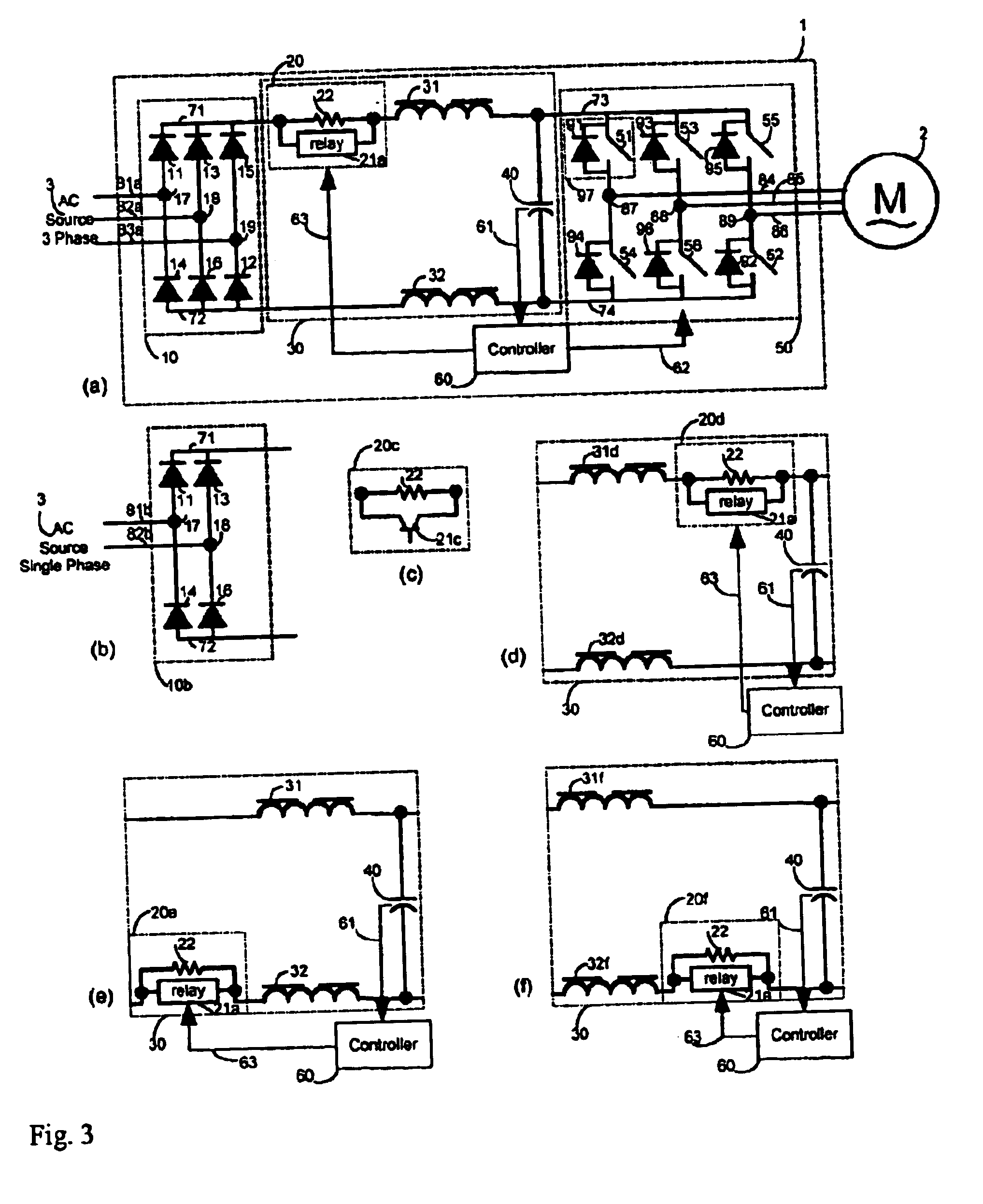Reduced capacitance AC/DC/AC power converter
a power converter and capacitance reduction technology, applied in the direction of ac-ac conversion, power conversion systems, electrical apparatus, etc., can solve the problems of capacitor explosion, serious damage to other components of the power converter, and large capacitance electrolytic capacitors which must withstand a high level of dc voltag
- Summary
- Abstract
- Description
- Claims
- Application Information
AI Technical Summary
Benefits of technology
Problems solved by technology
Method used
Image
Examples
Embodiment Construction
An AC / DC / AC power converter constructed according to the preferred embodiment of the present invention is indicated generally at 1 in FIG. 3a. A three-phase AC power source 3 supplies energy through wires 81, 82 and 83 to converter 1. Within converter 1, diodes 11-16 forms a unidirectional three-phase rectifier 10 only capable of passing the input energy from AC source 3 to the DC link 30, not vice versa. Cathodes of diodes 11, 13 and 15 are connected together to form a positive terminal 71. Anodes of diodes 14, 16 and 12 are tied similarly to form a negative terminal 72. Anode of diode 11 and cathode of diode 14 are connected together to wire 81 via node 17. Similarly anode of diode 13 and cathode of diode 16 joint to node 18 and connect to wire 82. Anode of diode 15 and cathode of diode 12 tie to node 19 and wire 83. Rectifier 10 rectifies ac voltage from AC source 3 and presents a voltage consisting of a DC average voltage plus multiples of 6.sup.th harmonics between positive and...
PUM
 Login to View More
Login to View More Abstract
Description
Claims
Application Information
 Login to View More
Login to View More - R&D
- Intellectual Property
- Life Sciences
- Materials
- Tech Scout
- Unparalleled Data Quality
- Higher Quality Content
- 60% Fewer Hallucinations
Browse by: Latest US Patents, China's latest patents, Technical Efficacy Thesaurus, Application Domain, Technology Topic, Popular Technical Reports.
© 2025 PatSnap. All rights reserved.Legal|Privacy policy|Modern Slavery Act Transparency Statement|Sitemap|About US| Contact US: help@patsnap.com



